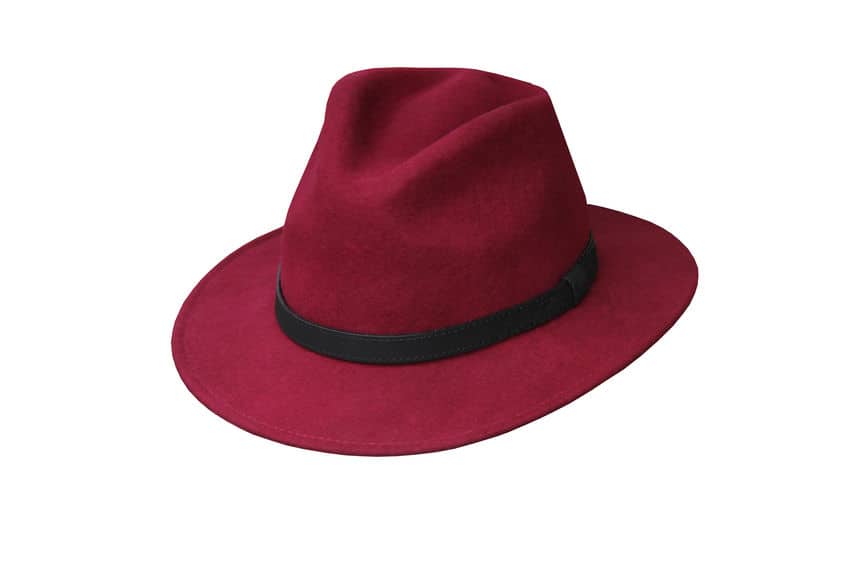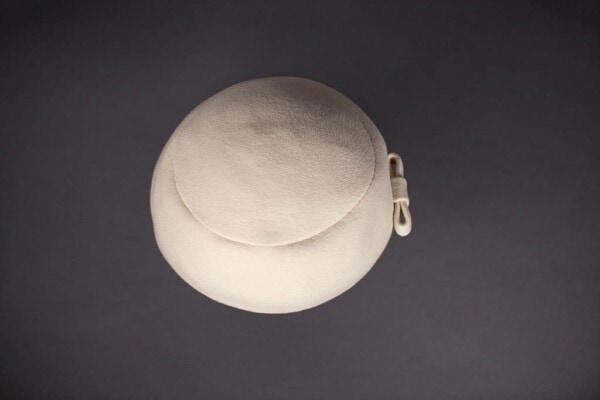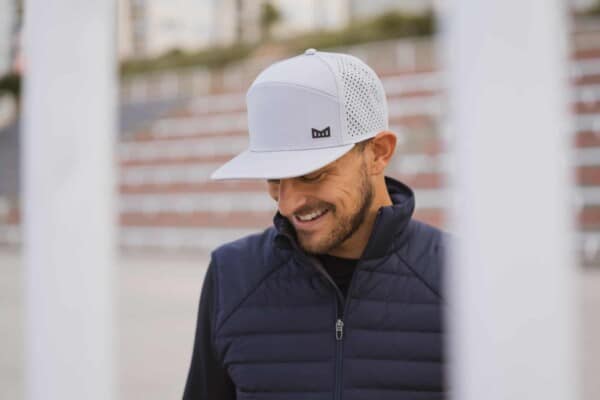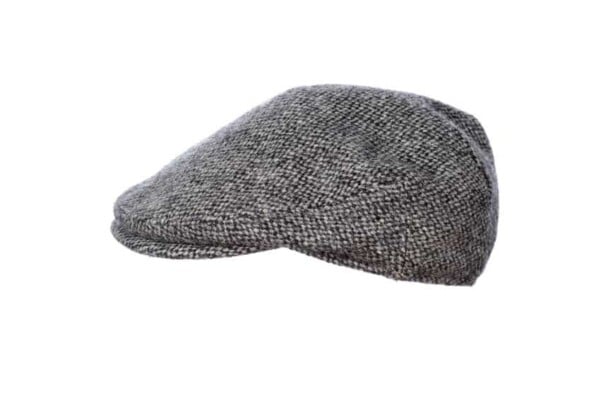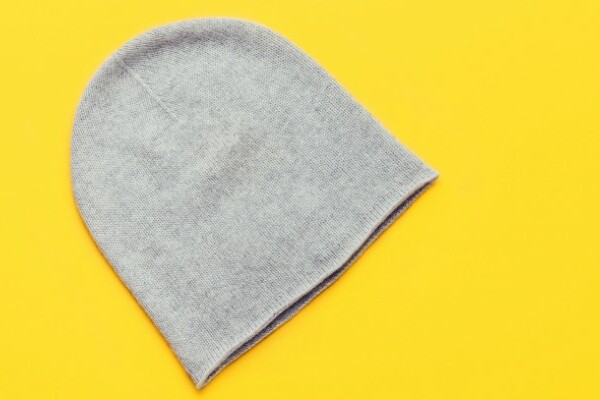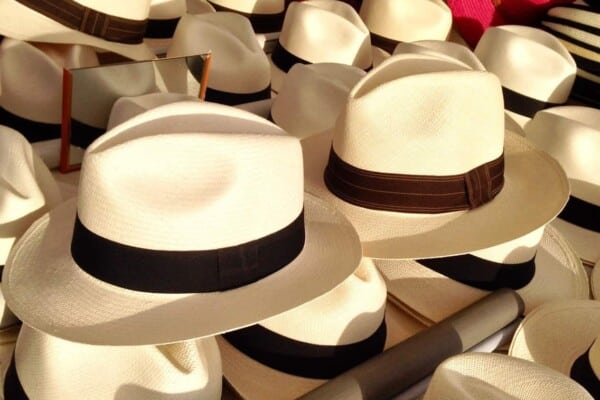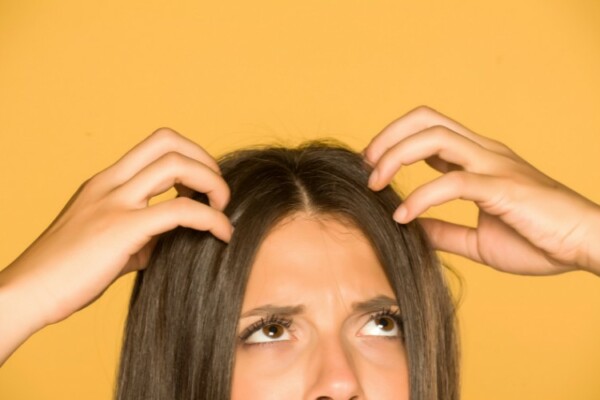Arriving at a semi-formal event sporting a wool fedora and a tweed blazer can make you the night’s dapper showstopper. Or wear a trilby while donning a bomber jacket and faded jeans without committing a fashion “faux pas” at the theater.
Trilbies and fedoras are both brimmed hats introduced in the late 1800s. Trilby hats are short-edged, often worn tilted back, and boast down-facing front brims. Fedora hats have a more pronounced “pinch,” sit flat on the head, and have slightly larger 2-4” brims.
Fedoras and trilbies look eerily similar to the untrained gent, but there are aesthetic variations upon closer inspection. Interestingly, both hats debuted in 19th-century stage plays from which they acquired their names. To learn about the difference between trilbies and fedoras, read on!
Trilby Hats: A Basic Overview
Trilby hats date back to the 1894 novel (and later play) Trilby, where a female actress sported this distinctly sharp-brimmed, low-riding hat during the play’s London stage production. Once a luxury hat touted by the wealthy horse race bettors, the trilby reverted to a more casual and trendy look in the modern fashion era.
This narrow-brimmed hat has a sharp, upturned rear brim, a slightly downward-angled front brim, and a deep-centered teardrop crown. Now constructed with neutral-colored smart casual materials (tweed or straw) and worn tilted back, trilbies are aesthetic staples for sophisticated gents at social events like semi-formal dinners where sportcoats and blazers are ideal.
Trilby hats were once a staple at polo matches, golfing tournaments, and horse races like the Kentucky Derby. It went out of favor during the 1970s, returning a decade later as a more retro, gender-neutral option.
Sean Connery notably wore a Sandown Trilby in both Dr. No and From Russia With Love. You can get your hats on one from Lock and Co Hatters, one of the oldest hatters in the world.

Today, trilbies designate a more youthful wearer and match best with in-style tightly-fitted, semi-formal apparel (like suit vests and rolled-up sleeves).
Pros of Trilby Hats
Trilbies may not be an “every occasion” accessory, but they do have their moments:
- Because trilbies have sharp-edged brims, you can flip it either up or down to match the look you’re attempting.
- They’re still trendy and once the preferred hat choice of Michael Jackson, the Blues Brothers, and Frank Sinatra.
- The narrow brim offers a quieter, less obnoxious fashion statement at formal events.
- Depending on how you wear them, trilbies can match any event (i.e., casual straw hats for summer beachwear or a tweed version for a more semi-formal dinner).
- Their low-profile, short-crowned style won’t grab much attention from other attendees.
Cons of Trilby Hats
If you were hoping to sport a trilby hat at every event you attend, this might disappoint you:
- A quality trilby hat can cost $200 to $500, which is pricey for a headpiece.
- Aside from its stylish appeal, a trilby hat’s short brim and rear-tilted allure don’t make it so suitable for protection from the elements.
- Trilbies so rarely match outfits that your options are to either force the look (and look silly) or become a fashion guru.
Fedora Hats: A Basic Overview
Fedora hats trace back to the 1882 French stage play, Fédora, with the show’s heroine — Princess Fédora Romanov — sporting this unique pinched cap while defying 19th-century gender expectations. Fedoras are still a modern-day fashion statement, though not as a casual touch like many inexperienced gents believe.
The wide-brimmed (2-4”) fedora is a semi-formal hat with a distinct teardrop-shaped crown and generally flat, round brim. Fedoras sit low and hang just above the brow line, making these stylish caps more practical for shielding the eyes from sunlight and seamlessly matching fancier attire like wedding tuxes and blazers.
Felt fedoras are the classic “gentleman’s” hat that still rocks the modern fashion industry some 120 years after Fédora hit stages.
Types & Examples
Though achieving global popularity with the Indiana Jones franchise and as ensemble finishers on the Hollywood red carpet — Johnny Depp and Justin Timberlake, for example — fedoras are quite misunderstood. Match your headwear to the event by experiment with these fedoras:
- Straw fedoras: These hand-woven accessories add a more casual and lightweight style to a summer-inspired event (i.e., beachside weddings).
- Pork pie fedoras: These “stingy” hats are short-brimmed, modestly upturned all around, and short-crowned caps are traditional headwear for taller gentlemen.
- Safari fedoras: These vintage Indiana Jones-esque fedoras usually have bands circling the crown and appear like a middle ground between bucket hats and classic fedoras.
Because there are so many fedora variations, some with short brims, teardrop crowns, and upturned edges, they’re easy to confuse for trilbies. The line between the two is far hazier than it used to be, but the traditional fedora is easy to pick out of a line-up.

Check out this Stetson Gurnee – Wool Fedora Hat on Amazon.
Pros of Fedora Hats
Fedoras may boast a rocky reputation in recent years, but they do have undeniable benefits:
- They provide a modest middle ground between sophisticated and casual, so long as your outfit tells the rest of the story.
- Fedoras boast softer synthetic textures like felt or wool that make this trendy accessory far more comfortable for hours-long events.
- You can experiment with different crown styles (i.e., teardrops vs. telescopes) or brim lengths (i.e., floppy vs. tight-brimmed).
- It’s the same hat made famous by the Prince of Wales in the early 1900s.
- Fedoras are practical headwear, keeping the head warm during cold weather and blocking sunlight (thanks to its exceedingly long brim).
Cons of Fedora Hats
If you were anticipating fedoras to be the end-all-be-all, you’re sadly mistaken:
- The fedora reputation is on a steady decline, thanks to its unfortunate meme status.
- The often-classic hat also resembles old-school gangster hats, which might not be an appropriate look for formal occasions like weddings or funerals.
Trilby Hats vs. Fedora Hats: Which One Should You Choose?
If you’re still debating whether a trilby or fedora will compliment your vintage, timeless, and classic semi-formal look, consider the complete head-to-toe outfit:
Wear a Trilby if You’re…
- Aiming for “sophistication” or sleek
- Attending a semi-formal event (no black-tie events)
- Wearing a buttoned-up blazer, fitted shirt, narrow pants, and loafers
- Looking for headwear appropriate during the cool winter months
- Going to a strictly outdoor event (proper etiquette says to take it off as you slip inside)
- Not wearing other noticeable accessories, like sunglasses
Wear a Fedora if You’re…
- Aiming for professional and vintage
- Attending a formal dinner, wedding, or classy gatherings (straw)
- Wearing a sharp blazer, sport coat, or tuxedo
- More petite or less brawny (for proper proportions)
- Planning to match the season (straw for summer, wool blends for winter)
- Not craving sun-eye protection, visiting the beach, or lying poolside
Final Thoughts
Both fedoras and trilbies remain trendy in 2022, but not all outfits (or events) mesh with these modestly sophisticated hats. In other words, plopping an elegant tweed trilby on your head while sporting a dark khaki trench coat screams “in style.” But pairing a tipped fedora with a plain black V-neck and ripped blue jeans can make even the most timeless hat look classless.
When you’re unsure which of these fashionable and youthful hats will complete your look, refer to the guide above to make the right choice.

